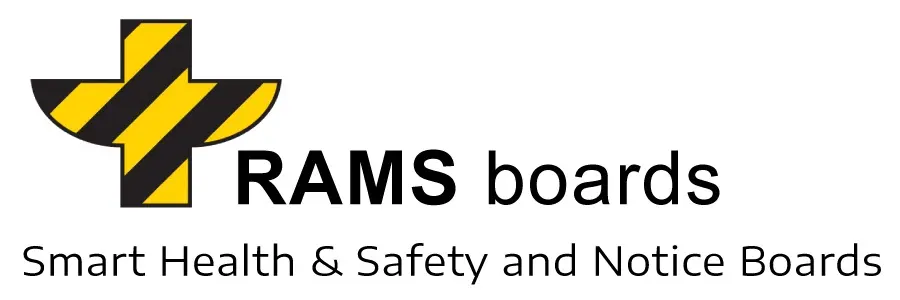RAMS boards: Streamlining Operations and Safety in Aviation and Airports
In the high-stakes and fast-paced world of aviation and airport management, effective communication and stringent safety protocols are not just beneficial – they are essential. RAMS boards have emerged as a critical tool in these environments, offering a robust and efficient way to manage safety, compliance, and information dissemination. This article explores the extensive use of RAMS boards in major aviation hubs and institutions including Heathrow Airport, Stansted Airport, Gatwick Airport, Manchester Airport, Agriport Middenmeer in the Netherlands, Martin Baker Aircraft, Rolls-Royce Aviation, and Cranfield University, showcasing their vital role in enhancing operational efficiency and safety.
RAMS boards in Airports
| Airport | Application of RAMS boards |
|---|---|
| Heathrow Airport | Displaying safety protocols, emergency procedures, and staff notices |
| Stansted Airport | Information on flight schedules, security guidelines, and staff training |
| Gatwick Airport | Managing passenger flow, emergency contact points, and maintenance updates |
| Manchester Airport | Showcasing security procedures, operational announcements, and safety guidelines |
| Agriport Middenmeer, Netherlands | Coordination of cargo handling, staff briefings, and regulatory compliance information |
Benefits of RAMS boards in Airports
- Enhanced Safety and Security: Providing critical information on safety procedures and security protocols in a high-risk environment.
- Efficient Passenger Communication: Streamlining the flow of information to passengers, from flight updates to emergency instructions.
- Staff Coordination and Training: Serving as a central point for staff training materials, schedules, and operational guidelines.
- Emergency Preparedness: Displaying emergency evacuation routes and procedures for quick and coordinated responses.
- Regulatory Compliance: Ensuring that all airport operations are in line with aviation regulations and standards.
- Operational Efficiency: Streamlining communication about maintenance schedules, air traffic updates, and logistical information.
- Sustainable Practices: Promoting environmental policies and initiatives within the airport environment.
RAMS boards in Aviation
| Company/Institution | Application of RAMS boards |
|---|---|
| Martin Baker Aircraft | Safety guidelines for aircraft manufacturing and assembly procedures |
| Rolls-Royce Aviation | Displaying engineering processes, quality control standards, and innovation updates |
| Cranfield University | Educational use in aviation courses, research project information, and safety protocols |
Benefits of RAMS boards in Aviation
- Critical Safety Information: Essential for conveying safety measures and protocols in aircraft manufacturing and maintenance.
- Innovation and Research Communication: Showcasing ongoing projects, research findings, and technological advancements in aviation.
- Quality Control and Compliance: Providing a platform for quality standards and compliance with aviation industry regulations.
- Employee Engagement and Training: Facilitating ongoing training and development for staff in the aviation sector.
- Incident Reporting and Management: Allowing for efficient reporting and tracking of incidents or safety concerns.
- Environmental and Sustainability Awareness: Highlighting initiatives and practices for sustainable aviation.
- Community Engagement and Outreach: Useful for informing students, staff, and visitors about aviation-related activities and achievements.
Summary
The integration of RAMS boards into the aviation and airport sectors is a testament to their versatility and effectiveness. In these environments where safety, efficiency, and precision are paramount, RAMS boards provide a reliable platform for managing essential information. From major international airports like Heathrow and Manchester to aviation manufacturers like Martin Baker Aircraft and educational institutions like Cranfield University, RAMS boards play a crucial role in ensuring smooth operations and maintaining high safety standards.
In airports, RAMS boards contribute to operational efficiency, passenger safety, and staff coordination. They provide a centralized point for critical information, ensuring that both passengers and staff have access to up-to-date and vital information.
In the aviation industry, these boards facilitate communication about safety procedures, innovation, and quality control, essential in an industry where precision and compliance are crucial.
The widespread use of RAMS boards across these sectors highlights their importance as a tool for enhancing safety, efficiency, and communication. As the aviation and airport industries continue to evolve with technological advancements and increased safety standards, the role of RAMS boards in facilitating effective communication and management will undoubtedly become more pronounced and valued.
